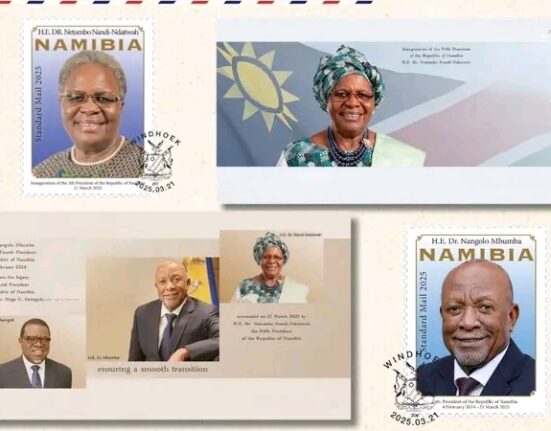Namibia, a country of stunning natural beauty and rich cultural heritage, has made significant strides since gaining independence in 1990. With a relatively small population and a wealth of natural resources, the country has considerable potential for economic growth. However, despite its successes in achieving economic expansion, Namibia faces ongoing challenges in balancing this growth with social equality. Issues such as high levels of poverty, income inequality, and unemployment continue to hamper the equitable distribution of wealth, preventing large segments of the population from sharing in the benefits of Namibia’s economic success.
This article explores the key factors influencing Namibia’s economic landscape, focusing on how the country can balance its impressive growth with the urgent need for greater equality.
Namibia’s Economic Growth: A Story of Promise
Since Namibia’s independence, its economy has seen considerable growth. The country is rich in natural resources, including diamonds, uranium, gold, and other minerals, which have helped fuel its development. The mining sector, in particular, plays a central role in Namibia’s economic structure, contributing significantly to the nation’s GDP and export earnings. Furthermore, sectors such as agriculture, tourism, and manufacturing also contribute to the economy’s diversification.
Key economic indicators suggest a growing economy. In recent years, Namibia has been experiencing steady economic growth, with an average annual GDP growth rate of about 4%. This growth has been supported by a strong infrastructure base, the country’s relatively high standard of living, and foreign investment in industries like mining and tourism.
Namibia’s government has made strides in improving basic infrastructure, such as roads, schools, and healthcare facilities, contributing to the country’s economic progress. Additionally, the country has pursued a number of policies aimed at fostering long-term sustainable development, including efforts to improve the business climate and promote economic diversification beyond the mining sector.
A Legacy of Inequality
Despite this impressive economic growth, the gap between the rich and the poor in Namibia remains vast. Namibia ranks as one of the most unequal countries in the world, with an exceptionally high Gini coefficient (a measure of income inequality) hovering around 0.59. This stark inequality is a legacy of the country’s colonial past, where economic and social disparities were entrenched under both German and South African rule.
During colonialism and the apartheid era, Namibia’s economy was heavily skewed in favor of the white minority, leaving the indigenous Black population marginalized and economically disenfranchised. Land dispossession, restricted access to education, and a lack of political power created structural barriers to economic advancement for the majority of Namibians.
While post-independence Namibia has made progress in reducing poverty and improving living standards for many, it still faces the challenge of addressing the deep-rooted economic inequality. According to the World Bank, the vast disparity between urban and rural areas, particularly in terms of access to resources, education, healthcare, and employment opportunities, exacerbates the inequality gap.
Unemployment and the Youth Crisis
One of the most pressing economic challenges Namibia faces is high unemployment, particularly among young people. Despite overall economic growth, the country’s unemployment rate remains stubbornly high, at around 33% according to the latest estimates. This is especially true among the youth, where the unemployment rate can rise to more than 50%.
The lack of job opportunities for young Namibians is a significant issue. Many young people graduate from school or university but are unable to find work, often because the skills they acquire do not match the needs of the labor market. The skills mismatch is compounded by the limited number of high-quality, well-paying jobs, particularly outside of the capital, Windhoek, and other major urban centers.
Additionally, the country’s education system, while improving, still faces significant challenges in preparing students for the workforce. Education disparities between urban and rural areas are a major concern, as rural communities often lack access to quality schools, vocational training centers, and higher education opportunities. This perpetuates cycles of poverty and limits the ability of young people from rural areas to break into the formal job market.
Poverty and the Struggle for Basic Services
Namibia’s poverty rate remains high, with approximately 30% of the population living below the national poverty line. Although the country has made notable progress in poverty reduction, the benefits of economic growth have not been equally distributed, and many Namibians still face significant challenges in accessing basic services such as healthcare, education, clean water, and housing.
Rural areas, in particular, suffer from limited access to these basic services, and many communities remain trapped in cycles of poverty due to factors such as drought, limited infrastructure, and low levels of investment. For example, agriculture is a key sector for rural households, yet climate change and recurrent droughts have made farming increasingly difficult, leaving many families without a reliable income or food security.
Urban areas are not immune to poverty, either. While Windhoek has seen rapid urbanization, the rise of informal settlements has created issues such as overcrowding, lack of sanitation, and the proliferation of slums. The high cost of living in urban centers also means that even some people with jobs struggle to afford basic necessities such as housing and healthcare.
Land Reform: A Critical Issue for Economic Equality
One of the most significant challenges Namibia faces in its efforts to achieve greater equality is land reform. Land inequality remains one of the most enduring legacies of colonialism and apartheid. The majority of productive land is still owned by a small percentage of the population, most of whom are descendants of the colonial settlers. Many Namibians, especially those in rural areas, have limited or no access to arable land, which limits their ability to generate income and improve their livelihoods.
The Namibian government has made efforts to address land reform, including implementing a Land Reform Programme aimed at redistributing land to previously disadvantaged communities. The program includes resettlement initiatives and aims to promote more equitable land distribution. However, progress has been slow, and there remains widespread frustration among many Namibians, particularly those in rural areas, who feel that land reform is not moving fast enough.
The challenge of land reform is complicated by the scarcity of available land, the need for legal and financial frameworks to support redistribution, and the economic pressures associated with agricultural production. Many landowners are reluctant to sell or lease land, and the government must balance the need for equitable land distribution with the interests of large-scale commercial farming operations that drive the country’s economy.
Diversifying the Economy for a More Equitable Future
Namibia’s reliance on mining, especially diamonds and uranium, has been a key driver of economic growth, but it also leaves the country vulnerable to fluctuations in global commodity prices. To reduce this vulnerability and foster more inclusive growth, Namibia must focus on diversifying its economy.
The government has placed a strong emphasis on the industrialization of the country, encouraging investment in non-mining sectors such as agriculture, manufacturing, tourism, and renewable energy. These sectors have the potential to create jobs, generate income, and reduce inequality by broadening the economy beyond the mining industry.
The agriculture sector, particularly small-scale and commercial farming, is crucial for rural development and poverty reduction. Policies aimed at improving access to land, credit, and markets for smallholder farmers can help unlock the potential of agriculture to reduce rural poverty and inequality. Similarly, the tourism sector, with Namibia’s stunning landscapes and wildlife, offers opportunities for growth and job creation, particularly in rural areas where employment options are limited.
Investing in renewable energy and green technologies is also a growing priority for Namibia, with initiatives aimed at harnessing the country’s abundant solar and wind resources. This transition to cleaner energy sources can provide new opportunities for job creation, especially in rural and underserved areas, while also contributing to Namibia’s long-term sustainability goals.
Namibia’s economic progress since independence is undeniable. The country has made significant strides in infrastructure, growth, and development, and its mining sector remains a crucial part of the economy. However, the challenge of balancing growth with equality remains a pressing issue for policymakers, as many Namibians continue to face poverty, unemployment, and social inequality.
To achieve long-term prosperity, Namibia must continue its efforts to diversify its economy, create jobs for the youth, address the legacy of land inequality, and ensure that all citizens have access to essential services. By striking a balance between growth and equality, Namibia can build a more inclusive and sustainable future for all its people, making the dream of a more equitable society a reality for generations to come.
Join 'Namibia Today' WhatsApp Channel
Get the breaking news in Namibia — direct to your WhatsApp.
CLICK HERE TO JOIN












